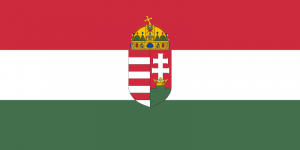Difference between revisions of "Language/Hungarian/Vocabulary/Basic-Greetings"
m (Quick edit) |
m (Quick edit) |
||
| Line 99: | Line 99: | ||
===Basic Hungarian Phrases - YouTube=== | ===Basic Hungarian Phrases - YouTube=== | ||
<youtube>https://www.youtube.com/watch?v=50YZuEDE8U8</youtube> | <youtube>https://www.youtube.com/watch?v=50YZuEDE8U8</youtube> | ||
==Related Lessons== | |||
* [[Language/Hungarian/Vocabulary/Relationships|Relationships]] | |||
* [[Language/Hungarian/Vocabulary/Modes-of-Transportation|Modes of Transportation]] | |||
* [[Language/Hungarian/Vocabulary/Geography|Geography]] | |||
* [[Language/Hungarian/Vocabulary/How-to-say-Good-Bye?|How to say Good Bye?]] | |||
* [[Language/Hungarian/Vocabulary/Family-Members|Family Members]] | |||
* [[Language/Hungarian/Vocabulary/How-to-write-a-letter|How to write a letter]] | |||
* [[Language/Hungarian/Vocabulary/Question-words|Question words]] | |||
* [[Language/Hungarian/Vocabulary/Business-and-work|Business and work]] | |||
* [[Language/Hungarian/Vocabulary/Ordering-at-a-Restaurant|Ordering at a Restaurant]] | |||
* [[Language/Hungarian/Vocabulary/Numbers-and-telling-time|Numbers and telling time]] | |||
{{Hungarian-Page-Bottom}} | {{Hungarian-Page-Bottom}} | ||
Revision as of 21:02, 22 March 2023
As a Hungarian language teacher with 20 years of experience, I am excited to introduce you to our first lesson in the "Complete 0 to A1 Hungarian Course." In this lesson, we will cover the basics of Hungarian greetings, such as "hello," "goodbye," and "good morning." It is important to understand the cultural significance of these words, as they are used differently in Hungarian society.
Let's start by learning the most essential greeting words and phrases you'll need to know to communicate effectively in Hungarian. Whether you're a tourist or a new Hungarian speaker, these phrases will help you in various situations that require basic communication. We will focus on the formal and polite expressions appropriate for all situations.
Hungarian Basic Greetings
In Hungarian, greetings are essential to show respect and politeness, especially to people you meet for the first time or to those who are older than you. The following are the most common Hungarian greetings:
- Szia (see-yah) - Hello (informal)
- Jó reggelt (yoh reh-gehl-et) - Good morning
- Jó napot (yoh nah-pot) - Good afternoon
- Jó estét (yoh eh-shteyt) - Good evening
- Viszlát (vees-laat) - Goodbye (formal)
- Viszontlátásra (vee-sont-la-taash-rah) - Goodbye (formal)
Hungary has a culture that values politeness, so it is essential to say "please" and "thank you" whenever possible. For example, "kérem" means "please" in Hungarian, and "köszönöm" is "thank you".
- Kérem (ke-rem) - Please
- Köszönöm (koos-uh-nuhm) - Thank you
It is crucial to note that Hungarian greetings vary depending on the time of the day and the situation. During informal interactions, it is common to shorten greetings to simpler versions.
For example, "Jó napot" can be shortened to "Jó napot kívánok," which means "I wish you a good afternoon."
To demonstrate the pronunciation of these greetings, let's go through each of them one at a time.
| Hungarian | Pronunciation | English |
|---|---|---|
| Szia | see-yah | Hello |
| Jó reggelt | yoh reh-gehl-et | Good morning |
| Jó napot | yoh nah-pot | Good afternoon |
| Jó estét | yoh eh-shteyt | Good evening |
| Viszlát | vees-laat | Goodbye (formal) |
| Viszontlátásra | vee-sont-la-taash-rah | Goodbye (formal) |
Basic Greetings in Context
It is essential to understand the context and situation where greetings are used in Hungarian. Greetings should be polite and respectful in all interactions, whether it's a formal or informal setting
1. When you meet someone for the first time in Hungary, you should use a formal greeting, like "Jó napot" or "Jó estét," followed by the person's name.
For example, "Jó napot, Kovács úr" means "Good afternoon, Mr. Kovács."
2. During an informal setting or meeting friends, it's appropriate to use the simple greetings such as "Szia" or "Hello."
For example, "Szia, Péter" means "Hello, Peter."
3. When leaving, it's crucial to use proper goodbyes. In a formal setting, you can use "Viszlát" or "Viszontlátásra." In an informal setting, "Viszlát" is appropriate.
For example, "Viszlát, köszönöm az élményt" means "Goodbye, thank you for the experience."
Tips for Practicing Pronunciation
To help you further improve your Hungarian Pronunciation, here are some tips:
1. Familiarize yourself with the Hungarian alphabet, which consists of 44 letters, including vowels and consonants.
2. Listen to Hungarian content as much as possible, including songs, movies, news broadcasts, and podcasts.
3. Practice speaking with a native Hungarian speaker, such as a language partner, tutor, or instructor. You can also practice with others using online language exchange programs.
4. Apply the phonetic rules of Hungarian when speaking. Hungarian is a phonetic language, which means that letters are pronounced the same way, regardless of the word.
In conclusion, the Hungarian language emphasizes politeness, respect, and etiquette. In this lesson, we have covered the essential greetings and conversation starters that will make your experience in Hungary more memorable. Remember that practice makes perfect, so don't be afraid to practice speaking with other people.
Videos
Basic Hungarian Phrases - YouTube
Related Lessons
- Relationships
- Modes of Transportation
- Geography
- How to say Good Bye?
- Family Members
- How to write a letter
- Question words
- Business and work
- Ordering at a Restaurant
- Numbers and telling time
